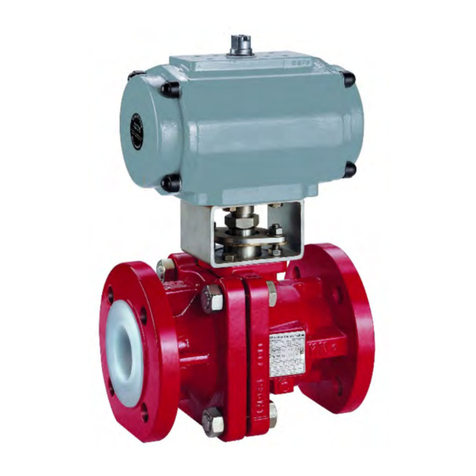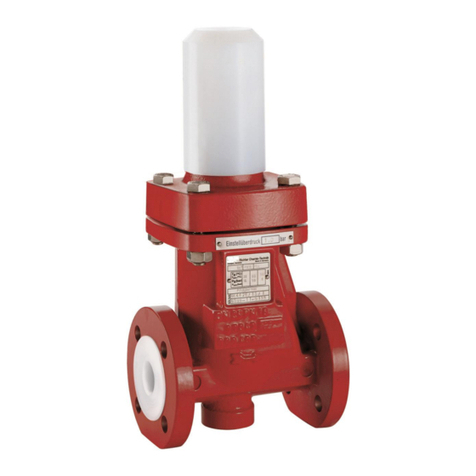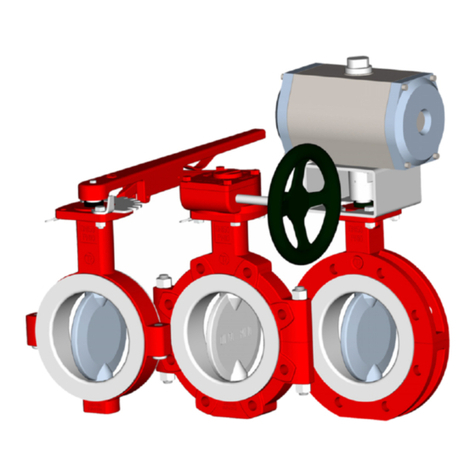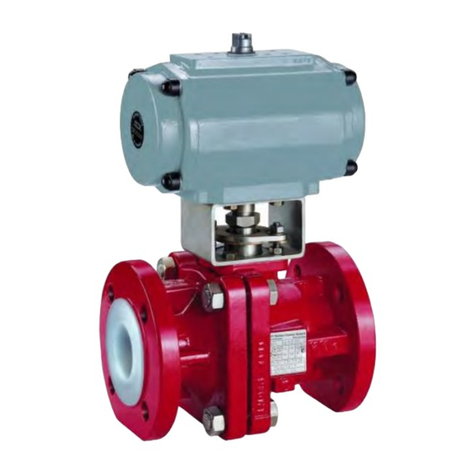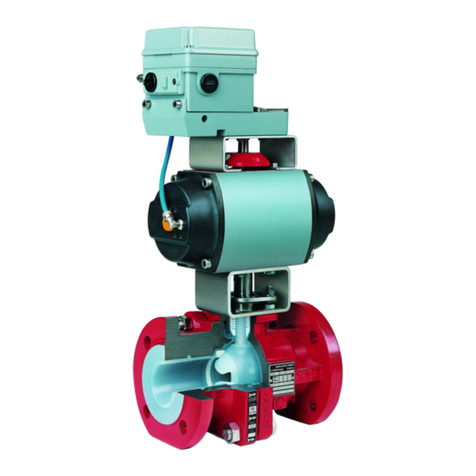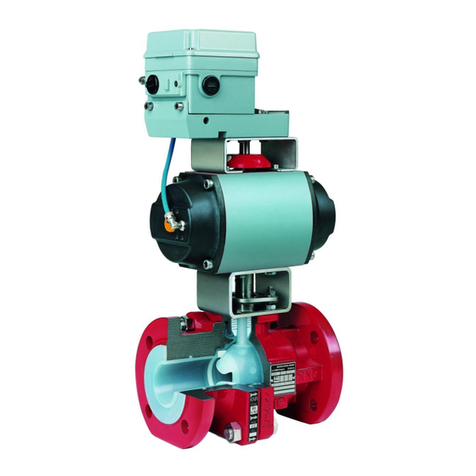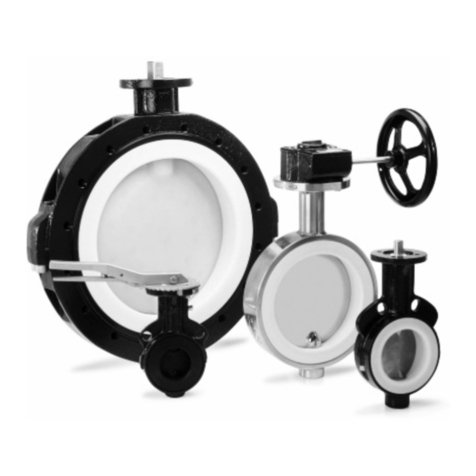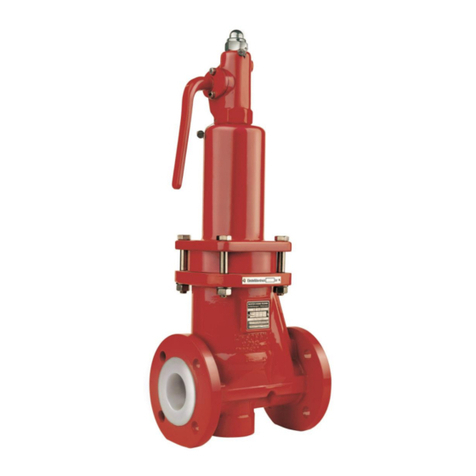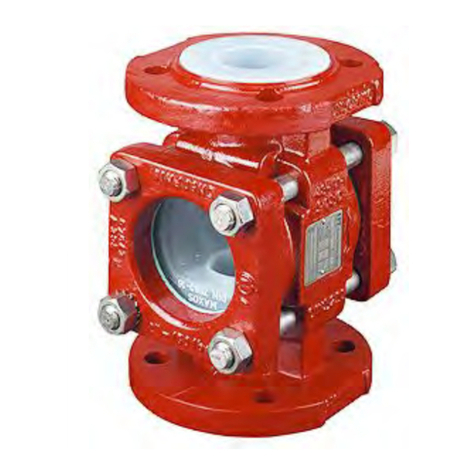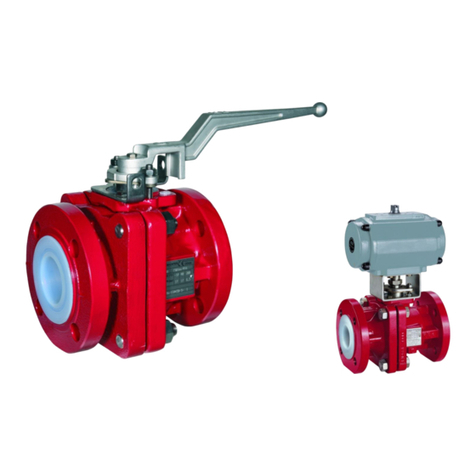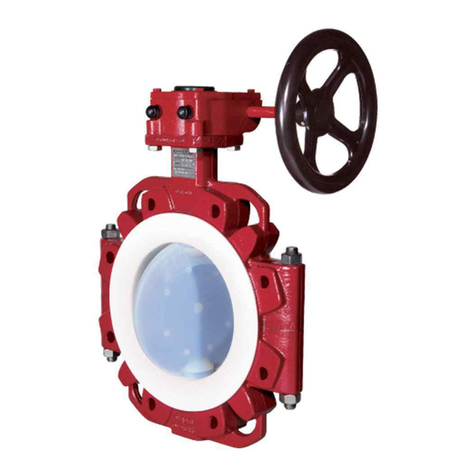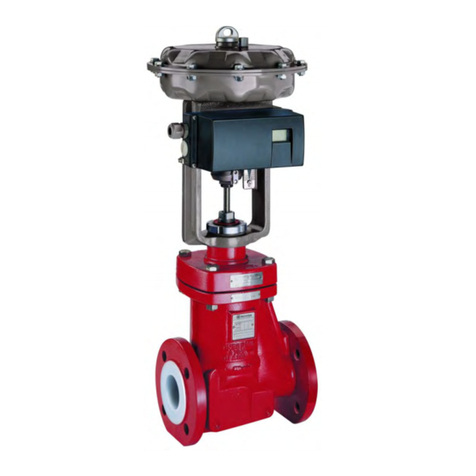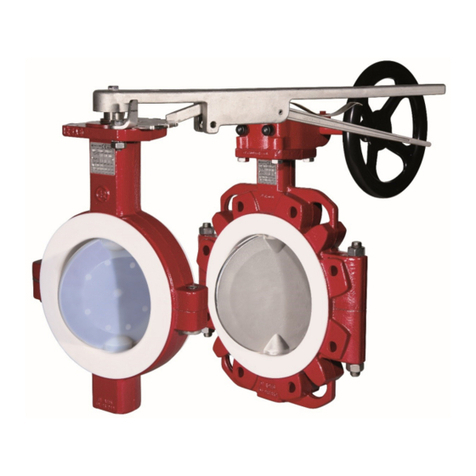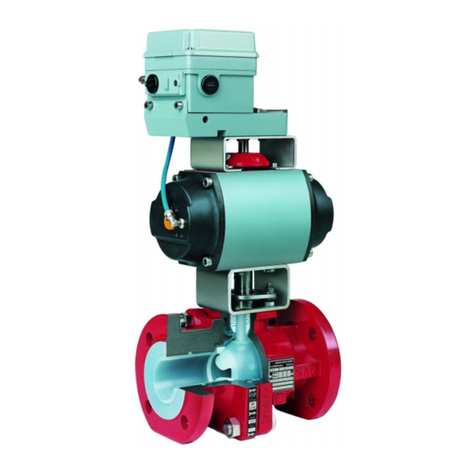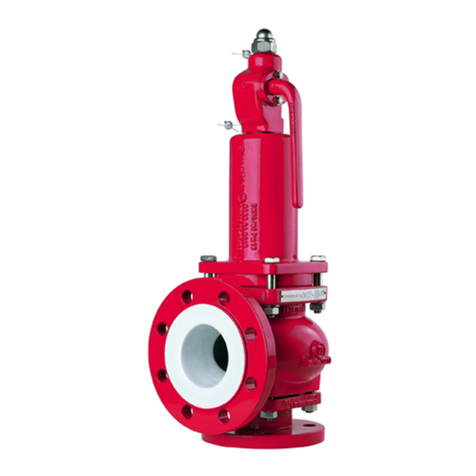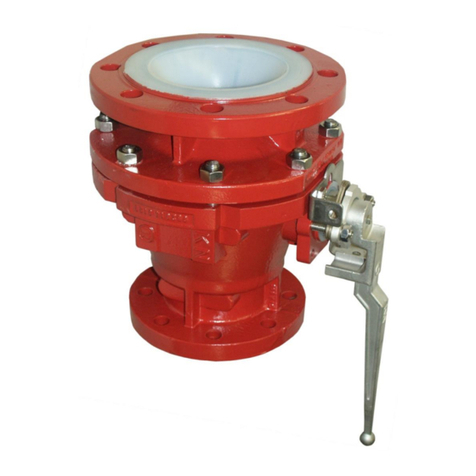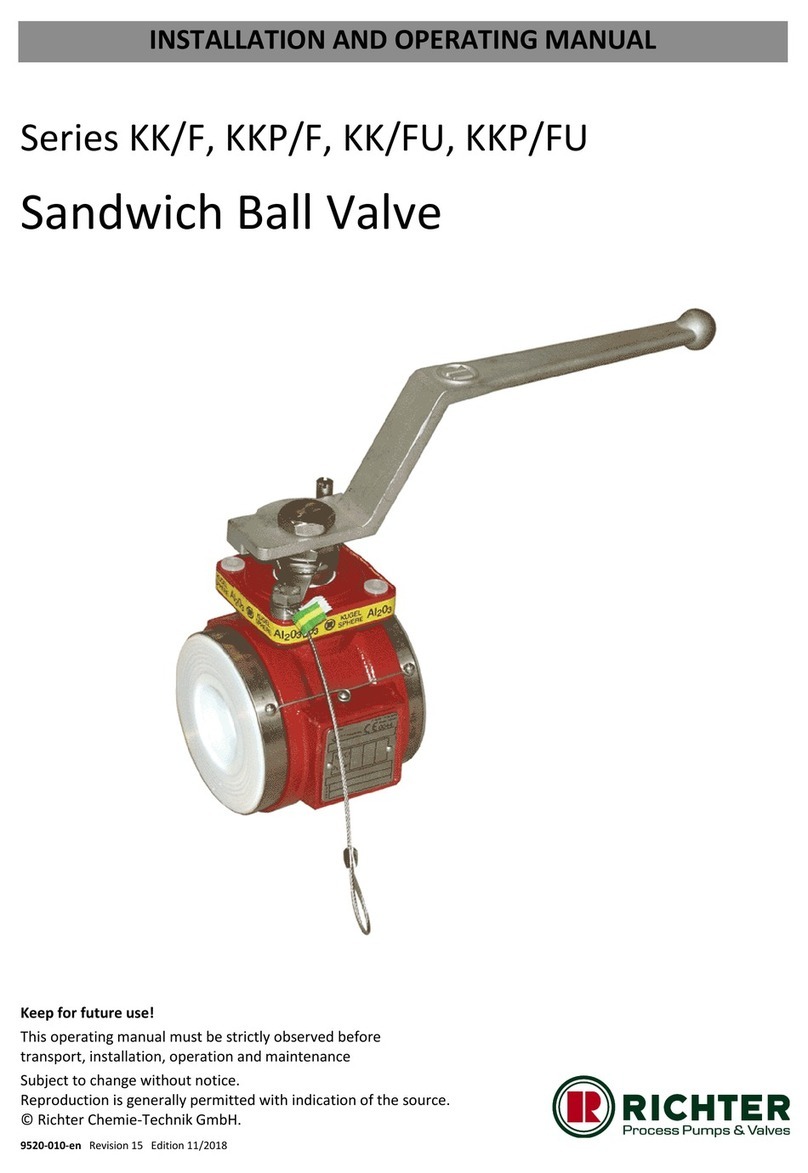9520-022-en Revision 16
TM 10477 Edition 05/2022
List of Contents
List of Contents .................................................... 2
Relevant documents............................................. 2
1Technical data ................................................ 3
1.1 Overview of sizes ............................................4
1.2 Type codes .........................................................4
1.3 Name plate, CE and body markings ...................5
1.4 Tightening torques ............................................. 6
1.5 Dimensions - Installation....................................8
1.6 Flow rate value kv [m³/h]..................................8
1.6.1 Disc/stem unit PFA-lined.........................................8
1.6.2 Disc/stem unit stainless steel, Hastelloy, Titan........9
1.7 Weights (ca. kg).................................................9
1.8 Breakaway torques ..........................................10
1.9 Cavitation coefficient z for 75% duty ...............10
1.10 Pressure-temperature-diagram .......................10
2Notes on safety............................................. 11
2.1 Intended use ....................................................11
2.2 For the customer / operator ............................ 11
2.3 Improper operation.......................................... 11
3Safety notes for applications in potentially
explosive areas based on the Directive
2014/34/EU (ATEX)....................................... 12
3.1 Intended use ....................................................12
4Safety note for valves, certified to Clean Air Act
(TA-Luft)....................................................... 14
5Transport, storage and disposal .................... 14
5.1 Storage .............................................................14
5.2 Transport preparations ....................................14
5.3 Return consignments .......................................14
5.4 Transport securing device................................14
5.5 Disposal ............................................................ 15
6Installation ................................................... 15
6.1 Installation possibilities.................................... 15
6.2 Flange caps and gaskets................................... 15
6.3 Direction of flow and installation position......15
6.4 Installation........................................................ 15
6.4.1 Additional advice for shut-off and control butterfly
valve with actuator................................................15
6.5 Earthing............................................................15
7Operation..................................................... 16
7.1 Initial commissioning........................................16
7.2 Improper operation and their consequences ..16
7.3 Shutdown .........................................................16
7.3.1 Additional advice for shut-off and control butterfly
valve with actuator................................................16
8Malfunctions ................................................ 17
9Maintenance ................................................ 17
9.1 Notes for assembly...........................................17
9.2 Valve actuation.................................................18
9.2.1 Actuated with lever...............................................18
9.2.2 Actuated by means of worm gear .........................18
9.2.3 Remotely actuated................................................18
9.2.4 Required breakaway torque..................................18
9.3 Tests .................................................................18
10 Drawings ...................................................... 19
10.1 Legend..............................................................19
10.2 Sectional drawing NKS-C .................................19
10.3 Sectional drawing NKL-C ..................................20
10.4 Worm gear .......................................................20
10.5 Actuator............................................................21
10.6 Connection actuator.........................................21
10.7 Dimensional drawing NKS-C with hand lever .22
10.8 Dimensional drawing NKS-C with worm gear ..23
10.9 Dimensional drawing NKSP-C...........................24
10.10 Dimensional drawing NKL-C with hand lever26
10.11 Dimensional drawing NKL-C with worm gear..
......................................................................27
10.12 Dimensional drawing NKLP-C ......................28
Relevant documents
EG-Declaration of conformity
Manufacturer Declaration ATEX Directive
2014/34/EU
Certification of leakage rate
Form for Safety Information Concerning the Con-
tamination QM 0912-16-2001_en
For NKLP-C or NKSP-C, operating manual for actu-
ator
